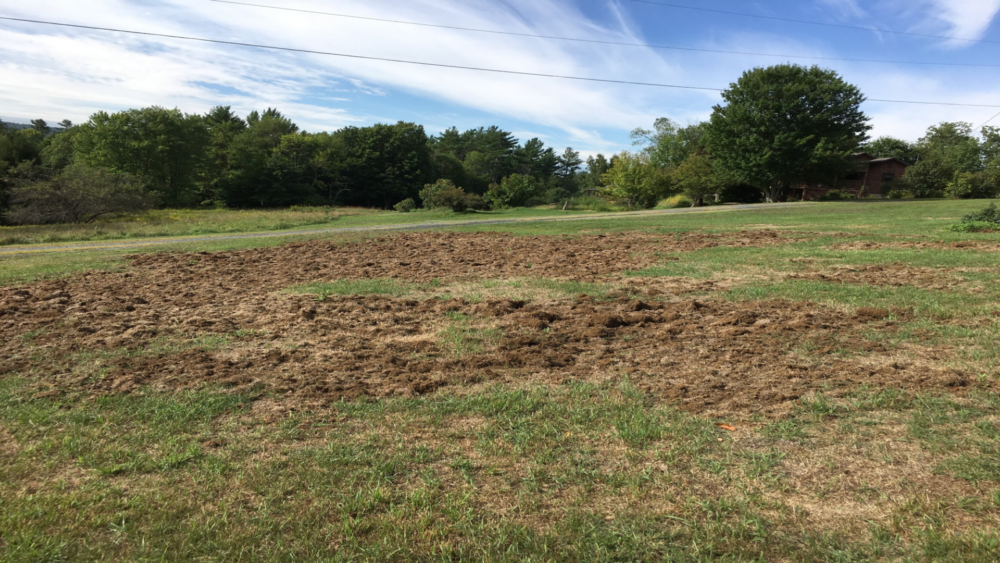This is a three-part blog about a class of pesticides called neonicotinoids. In Part I we will cover how they came to be used to control grubs in lawns and how neonicotinoids are possibly causing problems for bees and other pollinators, especially when misused.
Grubs can be particularly damaging to a lawn and tend to reoccur from year-to-year in sunny lawns. Often the worst damage is caused by skunks and crows digging up the lawn in search of a meal. Traditionally, strong products have been employed to combat grubs, both preventatively and curatively.
Several decades ago, grub control in lawns used an older class of chemistry called organophosphates; one brand name was Oftanol. According to the EPA, this particular grub control product was discontinued in 1999, losing its registration and ability to be manufactured or used in the USA. Exposure to organophosphates without proper PPE (personal protection equipment) could affect people, especially applicators with repeated exposure. The higher use rates and adverse effects to humans and other mammals proved to be the proverbial nail in the coffin for Oftanol and similar pesticides.
A newer class of insect control gained favor, called neonicotinoids, also called neonics. This newer class of neonicotinoids was deemed safer to use and only needed to be used in small amounts to control insects, such as damaging grubs beneath your lawn. Merit was the original brand name for the most widely used neonicotinoid and was labeled for use in many pest control settings from large scale agricultural spraying in the mid-west, grub control in lawns, borer control in trees and even inside restaurants. Neonicotinoids were thought to be a monumental success and use of this and other related chemistries flourished in popularity providing cost effective control of damaging pests.
Studies and field observations in the early 2000’s began to point to some potential issues with imidacloprid (the generic name for the chemical once patented as Merit) and other neonics still in wide-spread use across the globe. Of particular concern was the suspected relationship between pollinators and the persistence of neonics to cause them harm. The internal guidance of bees using the sun to seek out nectar and the ability to return to the hive ultimately began to show up as a probable negative side effect of use, especially when sprayed in liquid form on large-scale agricultural crops like corn.
Spraying thousands of acres, particularly in the spring when trees and flowers adjacent to the fields are in bloom, caused pollinators to come into contact with flowers still wet from the neonic spray. While some bees would die outright, others would be injured in still unknown ways. The problem seemed to amplify over time building up and became a suspect of a syndrome known as ‘colony collapse’.
Colony collapse, although still a mystery in some regards, has suspected causal agents such as disease affecting the bees, parasites, and of course the exposure to neonics. The result is fewer bees and other pollinators, ranging from subtle effects all the way to a small pandemic with the death of entire hives and thus a substantial reduction of bees.
Neonicotinoids Part II, will explore in greater detail how Chippers has always used these products responsibly and in a manner that reduces risk as much as possible. Part III will review our expanded use of Acelepryn, a product that not only does not harm bees, but is safe to use around other pollinators and beneficial insects such as ladybugs. In fact in 2020, Chippers will use Acelepryn to replace imidacloprid, a neonic, for treating grubs.


